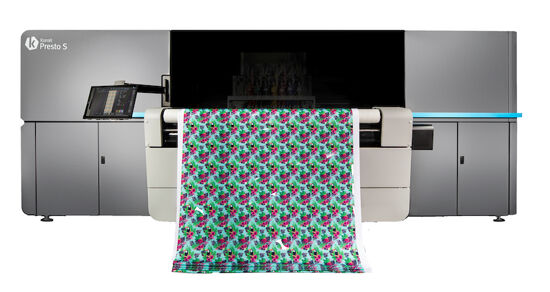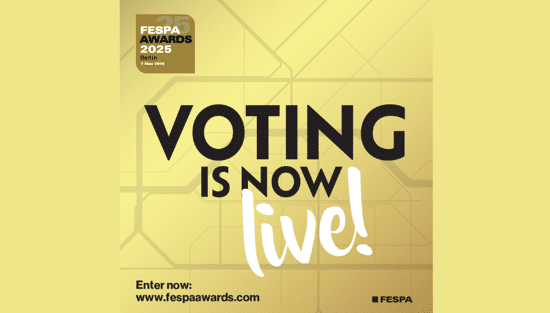How can Mimaki UV LED printers add an extra layer to signage?
Marc Verbeem, Supervisor Product Management from Mimaki Europe shares the how combining print layers with special textures results in unique and eye-catching signage.
An effective design is one that can catch the eye of the passer-by. However, the design or message can be missed if the final print is not dynamic and striking enough to draw the attention of the intended audience. Nowadays, advanced printing methods allow users to achieve striking results, through special effects, such as glossy or matte surfaces and glitter effects. When combining print layers with special textures, the results get even more eye-catching. Multi-layered printing can take your designs to the next level, by printing coloured, white, black, and clear layers over the top of each other, it allows for more interesting textures and colours, allowing your signs to reach their full potential.
Why UV?
Efficiency is a key benefit of UV printing. UV LED ink is cured immediately, meaning there is no drying time, so your sign and decorations will be ready as soon as they are printed. By curing immediately, there is no need for a drying heater, which reduces energy consumption and makes it the more sustainable printing option. In addition to this, UV ink can be used on a wide range of materials such as cloth, paper without a receptive layer, and PET film, which are difficult to print on using traditional latex or solvent, making UV LED printing not only more sustainable and effective but also more versatile than traditional methods.
Mimaki has been at the forefront of UV LED printing, with its latest UV printers, the UJV100-160Plus and the UCJV330-160, both excellent options when looking to multi-layer print. Based on the UJV100-160, the UJV100-160plus is the definitive entry-level model for sustainable sign and graphic printing with low running costs, versatile expression, and ease of printing for everyone. It has the basic functions of the conventional UJV100-160 with several additional features, most notably the pull-back printing function, which enables multi-layer printing up to three layers for a wide range of applications. The UCJV330-160, available from the beginning of 2024, implements many new features and innovations based on Mimaki's proprietary UV printing technology and feedback from customers and resellers. It offers multi-layered printing up to five layers and its new generation of high-precision print heads means it is capable of incredibly detailed prints and high print speeds.
Single and two-layered printing
Printing on a single layer is the fastest method of printing and can be used for general signage. On a single layer, the print layer construction can only be colour, white, or clear. Colours can still be vibrant and dynamic; however, this method is limited and will not make use of the full capabilities of Mimaki's UV printers.
Adding a layer can level up your backlit or window sign. When printing with one layer for a backlit sign, the colours look too dark when the backlight is off, however, when printing on two layers, the quality of the print when the backlight is off is far better. It also allows an additional clear layer to be added, which can give the sign more texture and a glossy effect.
For window signs, printing on just one layer will result in poor visibility due to the colour transparency, however with two-layer printing, having a white layer underneath will allow the colours to be more vivid, making the decoration more vibrant and brighter.
Three Layered Printing
While printing on two layers can bring out more vibrant colours for signs and decorations, it can be taken a step further with three-layer printing. Returning to backlit signs, while two-layer printing can keep the sign looking bright with the backlight switched off, some parts of the image are clipped white when it is on. Three-layer printing, which adds a white layer in between two coloured layers, can maintain the beauty of the image even when the backlight is off.
Returning to window decoration, two-layer printing only gives great visibility from one side, with the back being all white. By having a colour layer under and on top of the white layer, window prints can be colourful and vibrant from both sides.
The UJV100-160Plus pull-back feature allows for multi-layer printing regardless of the ink set. So, depending on the sign you are trying to create, you can either print white over colour, colour over white, or clear over colour. Alongside the pullback, another new feature of the UJV100-160Plus is the RasterLink7 software and its Tilt Compensation Function. Should the media be slightly skewed, the printer will be able to scan for any misalignments and will print the final layer per these misalignments. Guaranteeing quality printing even after the pullback.
A feature the UCJV330-160 can offer on three layers is watermark printing, allowing for two types of image expression on a single sign. Images and symbols printed with clear ink can appear once the backlight is switched on due to the different densities of the white layer printed under the colour layer. This can give these images and symbols a stylish 'hidden' or 'invisible' effect that livens up your design.
Four Layered Printing
By adding a fourth layer, you add a layer of black ink as well as white, colour, or clear. This unlocks the eye-catching 'day and night effect', where the image can change appearance depending if the backlight is on or off. For example, you could display an image of a car, which once the light turns on can reveal the engine and the interior of the vehicle. Or, more literally, display a city or town during the day with the light on and at night with it off.
It can be achieved by first printing a coloured layer, this is what will be displayed when the backlight is on, known as the 'floating colour layer'. Over this a black layer is printed, to hide the floating layer while the light is turned off. This is then followed by a white layer, which increases the density of the fourth and final layer, the coloured layer that will display when the backlight is off. While it may sound complicated, thanks to the four-layer printing capabilities of the UCJV330-160 and its RasterLink software, stunning day and night designs can be created easily.
Five Layered Printing
The primary objective of a sign is to display information, and standard signage can display a single message to a single audience at one time. However, what if you wanted to display different information, to different people, at the same time? For example, a café would want to display to passers-by that they are open or advertise their products to entice people in. However, once they entered, the café may want to inform them on the free Wi-Fi they have on offer.
Five-layer printing allows the printing of two different images on the front and back of the same sheet. Printing colour, white, black, white, colour creates two high-quality images for the front and back. This is perfect for shop window stickers, as the side facing out can advertise the products, while the side facing in can display important information for customers.
Summary
Multi-layered printing is a great way to add some style and uniqueness to your signs and displays, with new possibilities at every layer. Mimaki's UJV100-160Plus and the UCJV330-160 are not only great options for multi-layered printing through their versatility and innovative Mimaki technology, but by using UV they are also the most sustainable options for your sign and display.
Discover Europe's leading signage and visual communications exhibition, European Sign Expo 2025 from 6 - 9 May at Messe Berlin, Germany. Register your interest to attend here.
Topics
Interested in joining our community?
Enquire today about joining your local FESPA Association or FESPA Direct
Recent news
.png?width=550)
FESPA Middle East 2025 Overall Highlights
It has already been 2 weeks since we opened the doors on the 2nd edition of FESPA Middle East.

How will Fiery simplify print processes and enhance their user experience
In this podcast, Debbie McKeegan interviews Michael Chramtchenko, Chief of Staff, Sales and Marketing at Fiery, discussing the company's innovative software solutions for the print industry, particularly in garment decoration.

What is digital textile printing and what are the opportunities?
Nessan Cleary shares how textile printing covers a wide range of different market sectors which vary in opportunities. Nessan discusses sportswear, direct to garment and home décor.

Vote now for the FESPA Awards’ People’s Choice Award!
The voting for the prestigious People's Choice FESPA Award is now open until 7th February where those in the industry have the opportunity to vote for their favourite entries, celebrating the exceptional talent in the industry.